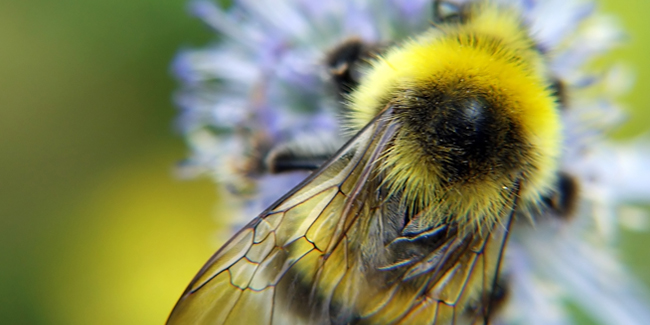
UPDATED: Video posted below.
Fresh Energy has been educating the public, policy makers, and developers about the opportunity for biodiverse habitat on solar sites since earlier this year. Photovoltaic (PV) solar uses the sun to generate electricity and is the most common type of solar energy generation.
In 2016 Minnesota is poised for a large solar bloom — likely more than 4,000 acres of ground-mounted solar will be built. That’s a piddling 0.01 percent of Minnesota’s 26.9 million acres of farmland and will generate less than two percent of the state’s electricity.
But for bees, monarch butterflies, and all pollinators, it will provide a world of good. Planted with a seed mix reviewed by the Minnesota Department of Natural Resources, 4,000 acres is the equivalent of 2,400,000 homes with 6’ x 12’ pollinator gardens.
At the VERGE conference on Wednesday, Oct. 28 I gave a 10-minute “VERGE Talk” from the mainstage regarding Minnesota’s experience in using solar PV to save pollinators.
Here are some of the materials we’ve used to inform our thinking on the subject:
- White House: National Strategy to Promote the Health of Honey Bees and Other Pollinators (PDF)
- TED Talk: Why Bees Are Disappearing (More about Dr. Marla Spivak)
- German Renewables Energy Agency: Solar Parks — Opportunities for Biodiversity (PDF)
- World Wildlife Federation: Solar PV Atlas — Solar Power in Harmony with Nature (PDF)
- BRE National Solar Centre: Agricultural Good Practice Guidance for Solar Farms (PDF)
Share / view on Youtube
Rob Davis’ bio | Follow Rob on Twitter
